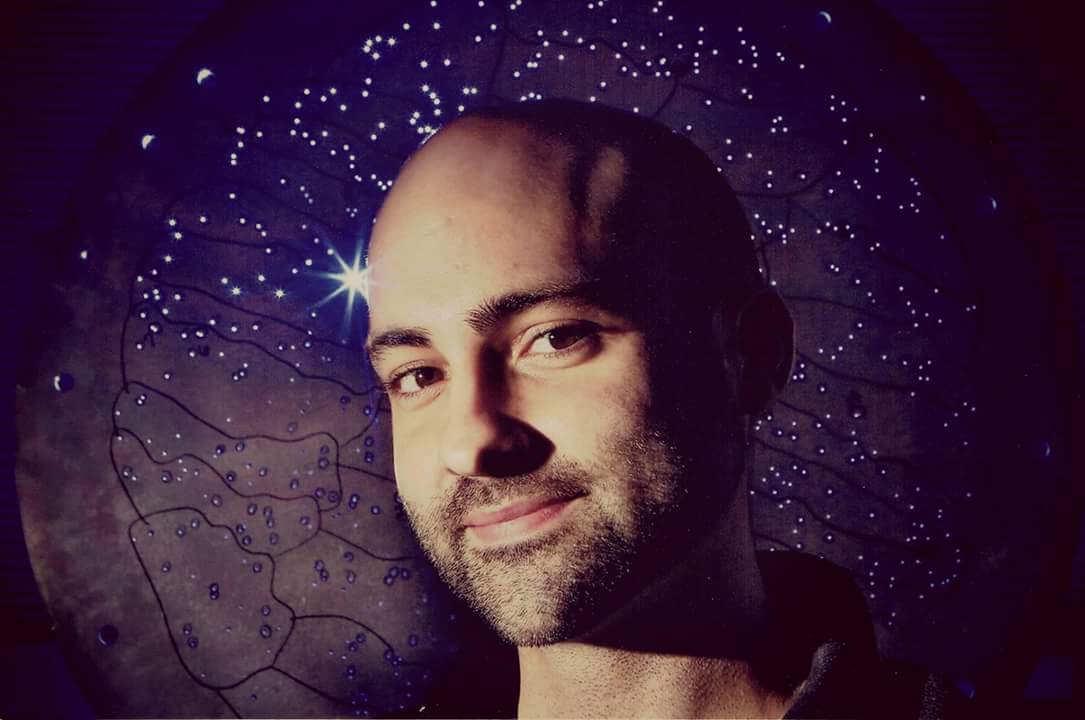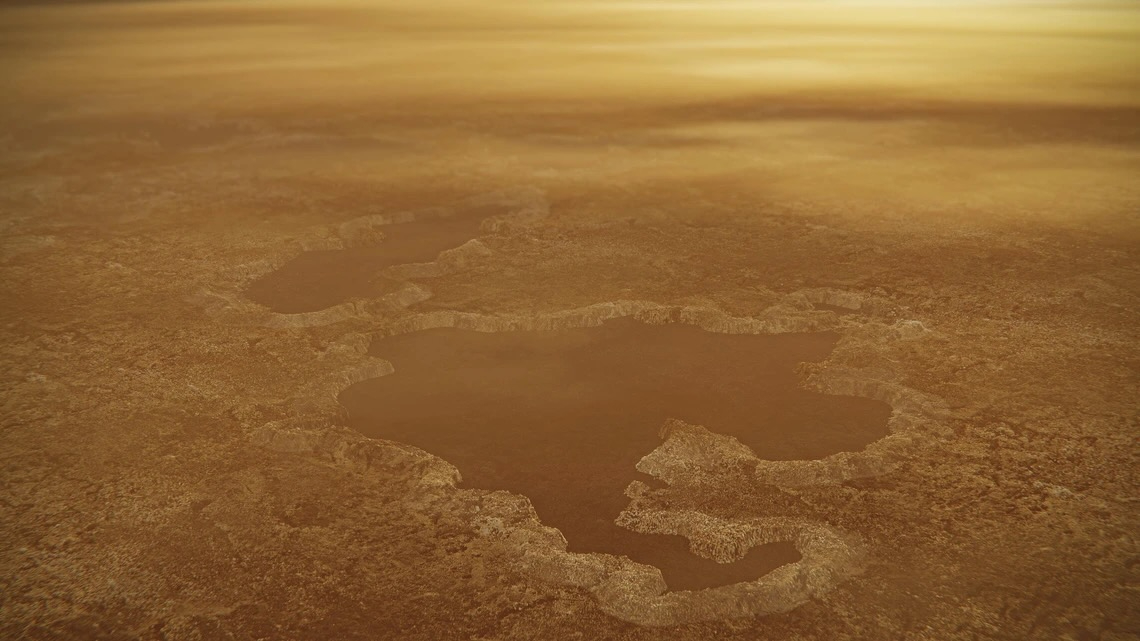
Tiny primordial black holes could have created their own Big Bang
Small black holes may have had a big impact on the early universe.

Tiny black holes may have had a big impact on the early universe.
A large population of small black holes could have flooded the young cosmos with particles and radiation, creating their own black hole-powered Big Bang, physicists propose in a new paper.
As of now, there is only one confirmed way to make black holes. You must start with a massive star and then let it die. Near the end of its life, its core collapses under its own weight. With no other force capable of withstanding that pressure, it continues collapsing into an infinitely tiny point: a singularity. Astronomers believe this is how all black holes in the universe, from the stellar-mass ones that populate every galaxy to the supermassive black holes that sit in galactic cores, got their start.
Related: How did cosmic inflation happen — and why do we care?
But there may be another way. The early universe was chaotic and energetic, especially after inflation, the hypothesized event that triggered an incredible expansion event that ballooned our universe to tremendous sizes in less than a second.
When inflation ended, space-time itself shook and vibrated with the released pent-up energies. The universe might have become so violent that random pockets of space-time could have spontaneously reached critical thresholds in density and size, thereby triggering the formation of "primordial" black holes that flooded the universe.
Astronomers have spent decades hunting for these primordial black holes, which were originally proposed by Stephen Hawking, or at least ruling out their possibility. Countless observations have declared an empty search, as any black holes larger than around a billion grams (about the mass of a typical mountain on Earth) would have affected the subsequent evolution of the universe and violated known observations.
Get the Space.com Newsletter
Breaking space news, the latest updates on rocket launches, skywatching events and more!

Arrested development
But not many researchers have paid attention to the smaller, mountain-size black holes that could have formed in the aftermath of inflation. So a team of physicists examined in detail how these smaller black holes might behave — and how we might detect them. They detailed their findings in a paper posted to the online preprint database arXiv.
All black holes have finite lifetimes. Thanks to Hawking, we know that black holes aren't entirely black. Instead, they slowly release radiation through an exotic quantum process happening at their event horizons. This process, known as Hawking radiation, is incredibly slow. A typical stellar-mass black hole releases only one particle of radiation every year. But smaller black holes release radiation at a faster rate. These smaller primordial black holes wouldn't have lived long, as Hawking radiation would have caused them to evaporate in only a few minutes.
This was well before the next significant epoch in the history of the universe, the formation of the first elements. So these black holes would have been able to escape current observational constraints, because they would have left the scene early enough.
But we can still find ways to detect small primordial black holes, as the researchers detailed in their paper.
The most notable impact is that these black holes could have delayed the evolution of the universe. Our cosmos is always expanding. So after inflation, the density of matter and radiation quickly dropped, as all that material was diluted in an ever-growing volume.
But the primordial black holes could have prevented that typical evolution. As soon as they formed, they would have started emitting Hawking radiation, transforming their mass into radiation. These small black holes could have added extra radiation just as quickly as the universe diluted it, thereby keeping the density constant in the first few minutes after the Big Bang, the physicists explained.
Related: Black holes of the universe (images)
Primordial instincts
This scenario would have put the universe in a sort of "stasis," pausing the normal expansion-driven evolution of the cosmos while the black holes did their thing. The researchers discovered that this would have allowed the black holes to have a number of effects on the universe without violating any known observations. They are born, they do something interesting while the universe is on pause, and they disappear, with the rest of cosmic history unfolding normally.
For example, the evaporation of these primordial black holes might have been responsible for filling the universe with dark matter or dark energy. Or they might have triggered the process of baryogenesis, forcing the universe to have more matter than antimatter.
And primordial black holes also could have flooded the universe with a unique signature of gravitational waves, which are ripples in space-time. Current gravitational wave detectors do not have the sensitivity to find these gravitational waves, but future space-based detectors — like the Laser Interferometer Space Antenna, which is set to launch in the next decade — could.
Follow us on Twitter @Spacedotcom or on Facebook.
Join our Space Forums to keep talking space on the latest missions, night sky and more! And if you have a news tip, correction or comment, let us know at: community@space.com.

Paul M. Sutter is an astrophysicist at SUNY Stony Brook and the Flatiron Institute in New York City. Paul received his PhD in Physics from the University of Illinois at Urbana-Champaign in 2011, and spent three years at the Paris Institute of Astrophysics, followed by a research fellowship in Trieste, Italy, His research focuses on many diverse topics, from the emptiest regions of the universe to the earliest moments of the Big Bang to the hunt for the first stars. As an "Agent to the Stars," Paul has passionately engaged the public in science outreach for several years. He is the host of the popular "Ask a Spaceman!" podcast, author of "Your Place in the Universe" and "How to Die in Space" and he frequently appears on TV — including on The Weather Channel, for which he serves as Official Space Specialist.
-
rod "But there may be another way. The early universe was chaotic and energetic, especially after inflation, the hypothesized event that triggered an incredible expansion event that ballooned our universe to tremendous sizes in less than a second. When inflation ended, space-time itself shook and vibrated with the released pent-up energies. The universe might have become so violent that random pockets of space-time could have spontaneously reached critical thresholds in density and size, thereby triggering the formation of "primordial" black holes that flooded the universe."Reply
My notes. Important to read that the origin of PBHs in the early universe is the post-inflation epoch. When was this and how large was that postulated universe? :)
The ref paper, Ref - Primordial Black Holes Place the Universe in Stasis, https://arxiv.org/abs/2212.01369, 29-March-2023.
From the 25-page PDF report cited, "I. INTRODUCTION In a broad class of inflationary scenarios, a population of black holes (BHs) is generated shortly after inflation as a consequence of the gravitational collapse of primordial density fluctuations. Such primordial black holes (PBHs) have received a significant amount of recent attention, in part because they can potentially provide a solution to the dark-matter problem. Indeed, while black holes evaporate over time as a consequence of Hawking radiation , PBHs with masses M ~> 10^15 g would nevertheless have lifetimes longer than the age of the universe. Indeed, a population of PBHs with masses within the range 10^17 g <~ M <~ 10^23 g can potentially account for the entirety of the present-day dark-matter abundance, even when the spectrum of PBHs is approximately monochromatic (for reviews, see, e.g., Refs. ). PBHs with lower masses can also have implications for cosmology. Indeed, PBHs with masses in the range 10^9 g <~ M <~ 10^14 g evaporate at a significant rate during or after Big-Bang nucleosynthesis (BBN), generating energetic particles which can modify the primordial abundances of light nuclei. As a result, the abundance of PBHs with masses in this range is tightly constrained ."
My note. Inflation with PBHs apparently creates more constraints for the BB model, production of H, He, and perhaps a little Li too as well as DM creation. Is this another fine-tuning problem in cosmology using exotic physics, not seen operating in the universe today to explain how we evolved naturally?
Keep in mind, the missing primordial neutrinos needed too for BB model of origins. Looks like much tweaking is coming too :) -
rod I calculated the Schwarzschild radius for a tiny PBH of 1 x 10^-17 solar mass or about 2 x 10^16 g. Radius is about 2.95 x 10^-12 cm so very tiny PBH in the early universe and perhaps flooding that postulated early universe too.Reply -
Jonathon Moseley Reply
I see, so where did the tiny primordial black holes come from?Admin said:A large population of small black holes could have flooded the young cosmos with particles and radiation, creating their own black hole-powered Big Bang, physicists propose in a new paper.
Tiny primordial black holes could have created their own Big Bang : Read more









